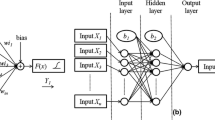Abstract
Although the prospect of the Internet of Things (IoT) is almost unlimited, developing IoT techniques can look discouraging, demanding a multidomain expertise and complex web infrastructure. Combining machine learning and data analytics by smart connected devices can enable a large variety of applications including sophisticated predictive maintenance systems, home-grown traffic monitors, and futuristic user goods (such as the Google Nest and the Amazon Echo). This work develops a novel method to estimate tide levels integrating wind records by means of two neural network architectures. We merge past measurements of tide level with wind data that available to be downloaded. All the data are pre-processed by sorting out tidal harmonics and wind-induced surges. Correlations between surge variations and wind stress are then computed. Next, fitting neural network and NARX network are trained after preparing data that include actual tide levels, estimated harmonic tide altitudes, and wind stress elements. We evaluate both models using the error performance and show the deployment of the selected model with MATLAB ThingSpeak visualization environment. The results demonstrated that the performance of input–output Neural Fitting was 0.0592, while it was 0.0039 for the NARX neural network.
















Similar content being viewed by others
References
Bashi OID, Jameel SM, Kubaisi YM, Al H, H. K., & Sabry, A. H. (2023) Threat detection model for WLAN of simulated data using deep convolutional neural network. Appl Sci 13(20):11592. https://doi.org/10.3390/app132011592
Hagan R, Gillan CJ, Spence I, McAuley D, Shyamsundar M (2020) Comparing regression and neural network techniques for personalized predictive analytics to promote lung protective ventilation in Intensive Care Units. Comput Biol Med. https://doi.org/10.1016/j.compbiomed.2020.104030
Faudzi AAM, Raslan MM, Alias NE (2023) IoT based real-time monitoring system of rainfall and water level for flood prediction using LSTM Network. In: IOP conference series: earth and environmental science. https://doi.org/10.1088/1755-1315/1143/1/012015
Prakash C, Barthwal A, Acharya D (2023) FLOODWALL: a real-time flash flood monitoring and forecasting system using IoT. IEEE Sens J. https://doi.org/10.1109/JSEN.2022.3223671
Prakash C, Barthwal A, Acharya D (2023) An IoT-based system for monitoring and forecasting flash floods in real-time. J Earth Syst Sci. https://doi.org/10.1007/s12040-023-02172-4
Zhou M, Jin H, Wang W, Ensslen A, Kuehl N, Stryja C, van Heemst D (2017) Toward green road freight transportation trends : truck platoon application. Sustainability (Switzerland)
Procopiou A, Komninos N, Douligeris C (2019) ForChaos: real time application DDoS detection using forecasting and chaos theory in smart home IoT network. Wirel Commun Mob Comput. https://doi.org/10.1155/2019/8469410
ITU (2019) Disruptive technologies and their use in disaster risk reduction and management. International Telecommunication Union
Tsipis A, Papamichail A, Angelis I, Koufoudakis G, Tsoumanis G, Oikonomou K (2020) An alertness-adjustable cloud/fog IoT solution for timely environmental monitoring based on wildfire risk forecasting. Energies. https://doi.org/10.3390/en13143693
Andrijević N, Urošević V, Arsić B, Herceg D, Savić B (2022) IoT monitoring and prediction modeling of honeybee activity with alarm. Electronics (Switzerland). https://doi.org/10.3390/electronics11050783
Taufiqurrahman A, Putrada AG, Dawani F (2020) Decision tree regression with AdaBoost ensemble learning for water temperature forecasting in aquaponic ecosystem. In: 6th international conference on interactive digital media, ICIDM 2020. https://doi.org/10.1109/ICIDM51048.2020.9339669
Khan NS, Ghani S, Haider S (2018) Real-time analysis of a sensor’s data for automated decision making in an IoT-based smart home. Sensors (Switzerland). https://doi.org/10.3390/s18061711
Starace G, Tiwari A, Colangelo G, Massaro A (2022) Advanced data systems for energy consumption optimization and air quality control in smart public buildings using a versatile open source approach. Electronics (Switzerland). https://doi.org/10.3390/electronics11233904
Wang X, Khan A, Wang J, Gangopadhyay A, Busart C, Freeman J (2022) An edge–cloud integrated framework for flexible and dynamic stream analytics. Futur Gener Comput Syst. https://doi.org/10.1016/j.future.2022.07.023
Ramkumar G, Seetha J, Priyadarshini R, Gopila M, Saranya G (2023) IoT-based patient monitoring system for predicting heart disease using deep learning. Meas J Int Meas Confed. https://doi.org/10.1016/j.measurement.2023.113235
Rypina II, Macdonald A, Yoshida S, Manning JP, Gregory M, Rozen N, Buesseler K (2022) Spreading pathways of Pilgrim Nuclear Power Station wastewater in and around Cape Cod Bay: estimates from ocean drifter observations. J Environ Radioact. https://doi.org/10.1016/j.jenvrad.2022.107039
Raissi M, Babaee H, Karniadakis GE (2019) Parametric Gaussian process regression for big data. Comput Mech. https://doi.org/10.1007/s00466-019-01711-5
Chacko N, Ali MM, Bourassa MA (2022) Impact of ocean currents on wind stress in the tropical Indian Ocean. Remote Sens. https://doi.org/10.3390/rs14071547
Wilder T, Zhai X, Munday D, Joshi M (2022) The response of a baroclinic anticyclonic eddy to relative wind stress forcing. J Phys Oceanogr. https://doi.org/10.1175/JPO-D-22-0044.1
Teng F, Dong C, Ji J, Bethel BJ, Pan A, Xu C (2021) Does the wind stress always damp an oceanic eddy? Geosci Lett. https://doi.org/10.1186/s40562-021-00206-7
Hamza AH, Hussein SA, Ismaeel GA, Abbas SQ, AbdulZahra MM, Sabry AH (2022) Developing three dimensional localization system using deep learning and pre-trained architectures for IEEE 802.11 Wi-Fi. Eastern-Eur J Enterprise Technol 4(9):41–47. https://doi.org/10.15587/1729-4061.2022.263185
Author information
Authors and Affiliations
Corresponding authors
Ethics declarations
Conflict of interest
The authors have no conflicts of interest to declare.
Additional information
Publisher's Note
Springer Nature remains neutral with regard to jurisdictional claims in published maps and institutional affiliations.
Rights and permissions
Springer Nature or its licensor (e.g. a society or other partner) holds exclusive rights to this article under a publishing agreement with the author(s) or other rightsholder(s); author self-archiving of the accepted manuscript version of this article is solely governed by the terms of such publishing agreement and applicable law.
About this article
Cite this article
Sahib, R.H., Jawad, D.H.M., Sameen, A.Z. et al. Leveraging machine learning and low-cost hardware for economical wind-driven water level prediction. SOCA (2024). https://doi.org/10.1007/s11761-024-00390-2
Received:
Revised:
Accepted:
Published:
DOI: https://doi.org/10.1007/s11761-024-00390-2




